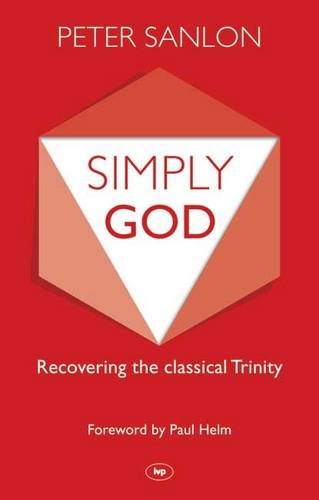Reviewed by Bradley Green
Who is God and how do we speak of Him? Peter Sanlon has written what is essentially an introduction to classical Christian theism. He notes that his goal in the book is “to interpret classical Augustinian Christianity afresh” (p. 18). It is a great read: a contemporary Augustinian account of classical Christian theism.
Chapter I is an introductory chapter which lays the groundwork: How and why are we to “engage God.” Here Sanlon treats issues of prolegomena such as the inescapability and necessity of theology, and the nature of language of God (or what is sometimes called “religious language”).
The rest of the book is divided into two sections: “The Simple God” (Part I) and “The Relational God” (Part II). In Part I Sanlon sets forth quite persuasively key tenets of classical theism. In four chapters (chapters 2-5) he treats simplicity, time/eternality, omnipotence/goodness, and immutability/impassability. Sanlon argues (chapter 2) that simplicity is absolutely essential, and is in a sense the foundation for the rest of classical theism. He argues (chapter 3) that despite weighty arguments against the timelessness of God, this doctrine is still worthy of affirmation. Additionally, Sanlon links timelessness with divine omniscience. Sanlon argues (chapter 4) for robust doctrines of both God’s omnipotence and God’s goodness, including a discussion of the problem of evil. Sanlon proceeds (chapter 5) to questions of immutability and impassability. Sanlon defends both of these traditional doctrines, couching his discussion again by leading with the centrality of divine simplicity.
In Part II Sanlon treats issues of the Trinity (chapters 6-8) and offers a final chapter, “Engaging the World” (chapter 9). Chapter 6 is a helpful summary of the key biblical data on the Trinity. In Chapter 7 Sanlon proceeds to walk through the key Trinitarian developments in church history — with an emphasis on Augustine, Richard of St. Victor, and Jonathan Edwards. In Chapter 8 Sanlon weighs in on a contemporary debated related to the doctrine of God: the argument by those like Colin Gunton that Augustine bequeathed to the Western theological tradition a confused understanding of God, whereby the one has eclipsed the many, such that the three persons have little meaningful place in theological discourse or understanding. Again, with divine simplicity at the forefront, Sanlon attempts to acquit Augustine (and classical theism more generally) of this error or tendency. The final chapter (chapter 9) is a valiant and helpful attempt to show the value of his own vision of the God of classical theism can aid in meaningfully engaging the world.
Sanlon has written a persuasive and compelling book which outlines a contemporary and Augustinian vision of classical theism. Particularly refreshing, rather than writing about theology, or about doing theology, Sanlon has actually theologized and has written theology. I have been looking for book to use in an undergraduate course I teach on the Doctrine of God, and I may have found it. If one finds Sanlon’s vision compelling, one might want to also track down the work of one of Sanlon’s tutors, Thomas Weinandy. Weinandy has clearly shaped Sanlon, and Weinandy also deserves careful reading by those wishing to grasp the weight and logic of classical theism. Sanlon’s book truly fills a need — an introduction to the classical doctrine of God.
Bradley Green is Associate Professor of Christian Thought and Tradition at Union University and Review Editor for Systematic Theology here at Books At a Glance.
